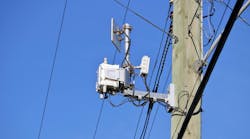Simulate Installed Antenna and RF Co-Site Issues with EM Tools (.PDF Download)
Modern aircraft contain many sophisticated electronic systems for communications, telemetry, navigation, guidance, radar detection, tracking, and more. Onboard radar systems typically help to maintain safety along the flight path by detecting thunderstorms, identifying regions of potential turbulences, and avoiding collisions. Other antenna-enabled systems for command and control, such as Identification Friend or Foe (IFF), also exist on commercial and military aircraft. In all of these avionic systems, antennas are key internal components. Their performance is critical to ensure these systems function properly.
For a long time, aircraft antenna designers have grappled with the challenges associated with designing antennas, integrating antennas into airborne avionic systems, and determining the best locations to install these systems on an aircraft. The build-and-test approach can address some of these challenges. However, for a vehicle as complex, large, and advanced as an aircraft, organizations are bound to incur huge expenses when they follow this approach.
To understand the difficulty involved, this method requires test chambers (which are sometimes very large), scheduling vehicle assets and their equipment, and significant manpower, as well as considerations in terms of infrastructure and facilities. Each of these requirements can be prohibitively expensive, potentially limiting the scope of testing available within a given project.
The Modeling and Simulation Solution
In contrast, modeling and simulation offers an economical, smart, and efficient means of rapidly addressing these design and engineering challenges (Fig. 1). The end result is usually improved system performance and compressed design cycles.








